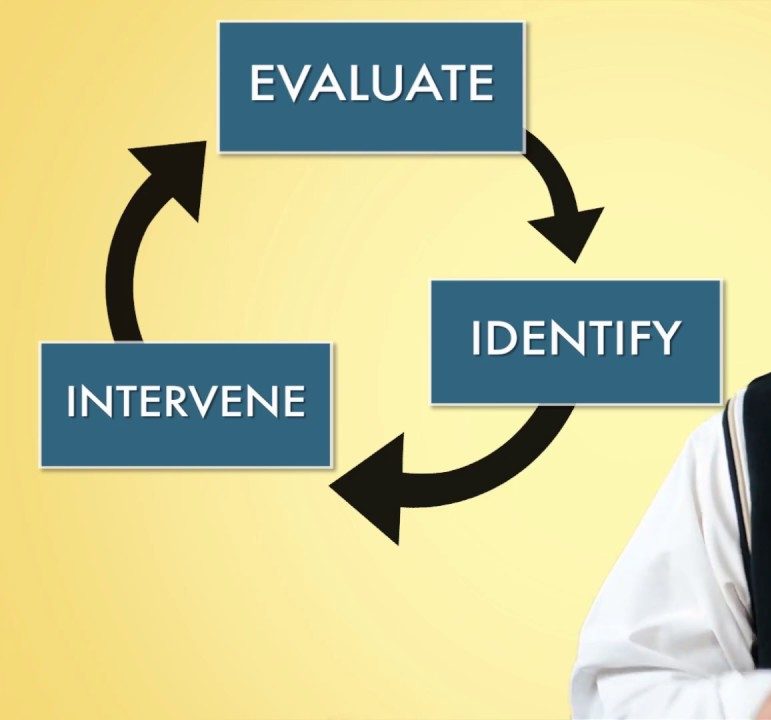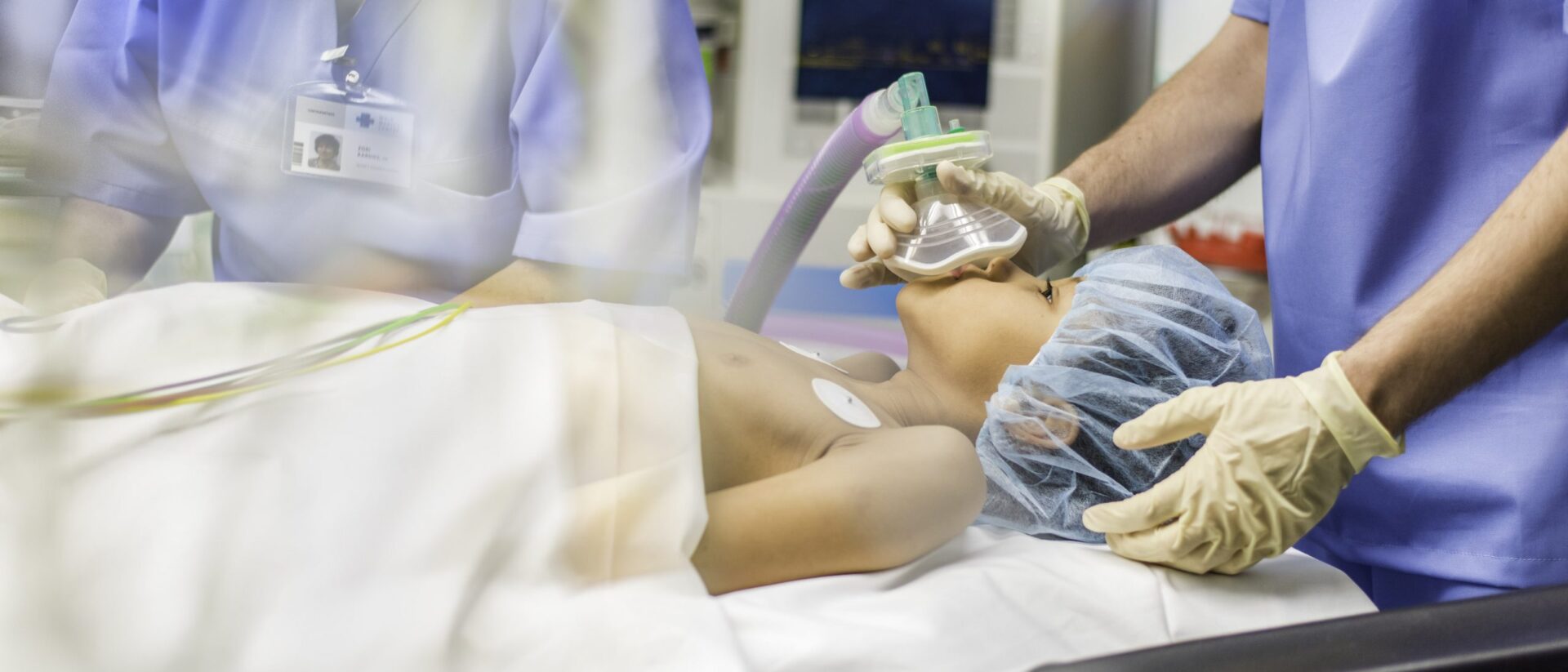When you imagine a cardiac arrest emergency, you probably picture an adult as the victim. While it’s true that adults make up the vast majority of cardiac arrest emergencies, children are not immune from this sudden heart condition. In fact, according to the Children’s Hospital of Philadelphia, each year, sudden cardiac arrest claims the lives of over 2,000 children and adolescents in the United States. It accounts for approximately 3-5 percent of all deaths in children aged 5-19 years.
By definition, cardiac arrest occurs when someone’s heart stops beating. In children, risk factors can include athletic activity, a sudden blow to the chest, obesity, abnormal heart rhythms, congenital heart disease, and exposure to drugs, medications, or toxins. Below, we’re sharing the pediatric BLS algorithm for cardiac arrest for a single rescuer. But first, let’s learn more about the signs of cardiac arrest and why rapid action is so critical.
Know the Signs of Cardiac Arrest
Because cardiac arrest can happen anywhere — on the playground, at a school, or in the neighborhood — it’s important to be alert to its signs even when off the clock and away from your job as a healthcare professional. Here are some common early warning signs of pediatric cardiac arrest:
- Chest pain while exercising
- Fainting or dizziness during or following exercise
- A racing heart
- Unexplained shortness of breath during exercise
- Excessive fatigue during exercise
- Change in exercise tolerance
Why It’s Critical to Act Quickly
A child who experiences cardiac arrest can suffer brain damage or death in just minutes if no help is offered. Yet the American Heart Association reports that, if performed immediately, CPR can double or triple the chance of survival from an out-of-hospital cardiac arrest episode. Fast action is the key to saving a child’s life. The pediatric BLS algorithm for cardiac arrest was created to help responders act quickly while completing the necessary life-saving steps before more advanced medical intervention can take place.
Review the Pediatric Cardiac Arrest Algorithm
Below are the six steps a single rescuer should take when responding to a pediatric cardiac arrest emergency. This algorithm changes if more than one rescuer is involved, which is something we dive into deeper in our BLS certification course.

- Verify scene safety. If you encounter a potential cardiac arrest victim, first make sure the scene is safe for both the rescuer and the victim.
- Check responsiveness. Get help. Check for responsiveness. First tap the victim and shout “HEY! HEY! Are you OK?” If they do not respond, shout for help. Activate the emergency response system.
- Assess for breathing and pulse. Check for absent or abnormal breathing by watching the chest for movements for 5 to 10 seconds. Simultaneously check for a pulse for a minimum of 5 seconds—but no more than 10 seconds. To perform a pulse check in an infant, palpate a brachial pulse. In a child, palpate a carotid or femoral pulse. It’s important to minimize delay in starting CPR, so take no more than 10 seconds to assess the patient.
- If the victim has a pulse and is breathing normally, monitor them until emergency responders arrive.
- If the victim has a pulse but is breathing abnormally, maintain the patient’s airway and begin rescue breathing. Administer one breath every 3 to 5 seconds, not exceeding 12 to 20 breaths per minute. Check the patient’s pulse every 2 minutes. Add compressions if the pulse is less than or equal to 60 beats per minutes with signs of poor perfusion. If at any point there is no pulse present, begin administering CPR. After 2 minutes of rescue breathing, activate the emergency response system if you haven’t already done so.
- Witnessed sudden collapse? If the victim is not breathing and has no pulse, and the collapse was sudden and witnessed, leave the victim to activate the emergency reponse system and retrieve the AED.
- Begin CPR. If a pulse is not identified within 10 seconds, and the collapse was not witnessed, immediately begin administering CPR, starting with chest compressions. Compressions should occur at a rate of 100 to 120 compressions per minute, at one third the depth of the chest. For an infant, use the 2-finger chest compression technique. For a child, use one or two hands, whatever is needed to provide adequate compression depth. Use a compression-to-ventilation ratio of 30 compressions to 2 breaths.
- Activate emergency response and retrieve AED. After 2 minutes of CPR, if the emergency response system has still not been activated and you are still alone, leave the victim to activate the emergency response system and retrieve the AED. Use the AED as soon as it is available.
- If the AED advises that the patient has a shockable rhythm, follow the prompts, clear the patient, and deliver the shock. Immediately resume CPR, starting with compressions, for 2 minutes or until the AED prompts you to check the patient’s rhythm again. Compressions should not be discontinued for more than 10 seconds. Continue providing CPR and following the AED prompts until ALS providers can take over or the victim begins to breathe, move, or react.
- If the AED advises that the patient’s rhythm is nonshockable or no shock is advised, immediately resume CPR, starting with compressions.. Continue CPR for 2 minutes, or until the AED prompts you to check the patient’s rhythm again. Compressions should not be discontinued for more than 10 seconds. Continue providing CPR and following the AED prompts until ALS providers can take over or the victim begins to breathe, move, or react.
Learn More About the Pediatric BLS Algorithm In Our Certification Course
A Basic Life Support certification course is invaluable on the job in the healthcare industry as well as in your daily life. With the skills you gain in a comprehensive BLS course, you’ll feel confident stepping in and offering proven, effective care for a child, teen, or adult experiencing a heart attack or other emergency.
With our online BLS certification course, you can earn your BLS certification at the pace and time that works for you. Our certification lasts for 24 months and is accepted by a vast majority of healthcare institutions across the country. When it’s time to renew, our recertification course gives you the latest information and refresher on critical skills to make sure you remain prepared for whatever lifesaving situation you may encounter.
In addition to the pediatric BLS algorithm for cardiac arrest, you’ll learn the following in our BLS course:
- Basic steps of CPR for adults
- Rescue breathing for adults, children, and infants
- Use of a bag-valve-mask device and pocket face mask to administer breaths
- CPR as a lone rescuer or as a part of a two-rescuer team
- Appropriate procedure and use of an automated external defibrillator (AED)
- Training directly geared toward the needs and requirements of medical professionals
For more information, or to enroll now, visit our BLS certification course page.
Recommended Articles

3 Tips for Handling Holiday Pediatric and Neonatal Resuscitation Emergencies
The primary assessment is broken into A, B, C, D, E: airway, breathing, circulation, disability, exposure. Learn more in this short video review.




